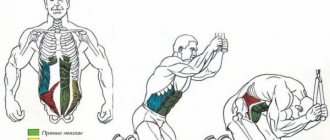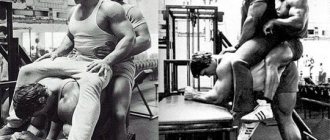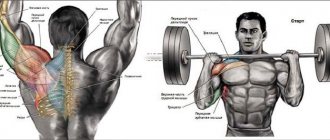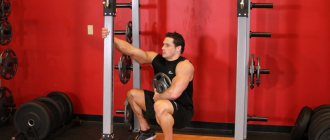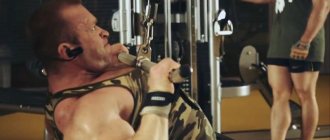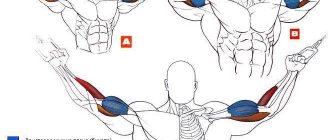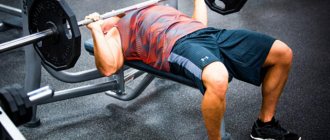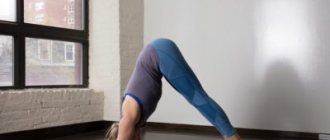Elementary bruises, sprains, wounds and other types of industrial and domestic injuries are among the factors that are almost always accompanied by pain, discomfort, inability to perform everyday activities, as well as complete or partial loss of ability to work.
Should we talk about fractures? It is this type of injury that causes particularly serious damage to the body and requires long and often painful rehabilitation. In addition, complications that arise in the post-rehabilitation period are not uncommon.
These include, for example, swelling of the hand after a fracture of the radius, impaired functionality of the limb, and lack of previous mobility. But it is fractures of the radius that are among the most common and make up about thirty percent of the list of injuries received by both children and adults.
What should I do to restore my former mobility? What means and methods are the most effective and safe? Let's talk about this in more detail.
Traditional methods and exercises will help restore the mobility of a damaged hand.
Features of the exercise
Wrist flexion is provided by small, deeply located muscles of the same name - wrist flexors. The antagonists are, respectively, extensors. Together they provide mobility of the hands, and with proper development, together with the brachioradialis muscle, they give the forearm a characteristic volume and relief. Also, when training the forearms with weights, the finger flexor muscles, which provide grip strength, are stressed.
In everyday life, we make quite a lot of movements with our hands, however, this is not enough for the level of muscle development required by an athlete.
Wrist flexions and extensions are performed with the maximum number of repetitions and approaches. You can use a special cabinet, stand, bench, or your own thighs as support. The weight should be light (the muscles are quite small). You can use:
- A barbell or an empty bar.
- Dumbbells. In this case, it will be more convenient to train the right and left hands in turn.
- An expander that can be secured near the floor.
- Any other weight that is at hand (for home training).
A contraindication to performing wrist flexion and extension is the presence of recent injuries in this area.
Complications of a fracture and their causes
Falls are the most common cause of damage to the radius bones of the arms.
The opinion that after receiving a fracture of the radius is enough to apply a cast, after removing which the damaged limb will regain its former mobility and functional abilities, is fundamentally erroneous.
Even with timely first aid measures, during the rehabilitation process, especially if the specified period is a considerable amount of time, muscle tissue somewhat loses its elasticity and atrophies, which leads to a partial loss of performance. But various complications, which can be the result of various factors, are no exception.
Physiological and age-related characteristics of the patient’s body, the presence of concomitant diseases and injuries, lack of nutritional culture and the presence of bad habits, as well as many other factors can lead to the fact that the recovery period will drag on for a long time and will be associated with a number of complications, the most common of which are :
| Name. | Characteristics and features. |
| Infection of open wound surfaces. | This happens mainly against the background of open fractures and is a consequence of infection in open wounds. The result of infection can be suppuration and subsequent tissue death. To prevent infection, it is recommended to use only sterile materials for dressing. |
| Incorrect bone fusion. | If the rules for fixing the bone when applying plaster are violated, they may not heal properly. This complication entails pain and discomfort. After removing the plaster, complications such as partial loss of ability to work, inability to bend the hand or clench the palm into a fist, impaired mobility and many others are possible. |
| Formation of contracture. | The complication is associated with pathological changes affecting muscle and fat tissue. The consequence of this pathology is limited mobility of the injured limb. |
| Fat embolism. | A rather rare type of possible complications that develops as a result of blockage of the vascular ducts with particles of adipose tissue and disruption of circulatory processes. Mostly observed against the background of extensive damage to bone tissue. |
| Pathological changes in muscle tissue. | Against the background of local damage, muscle tissue may be injured, which subsequently loses its viability and dies. To prevent further complications, such as suppuration, dead tissue should be removed surgically. |
Unfortunately, even first aid measures taken in a timely manner and carried out in a qualified manner, consisting of applying plaster and carrying out other manipulations, do not guarantee a successful recovery, which is clearly confirmed by the photos and videos in this article. In order to avoid serious consequences, the patient is instructed to lead a healthy lifestyle and eliminate negative factors as much as possible, which include, for example, drinking drinks containing alcohol and smoking.
Advice! When undergoing treatment at home, the patient must visit a doctor to have a specialist assess the progress of the tissue restoration period. If any, even minor, symptoms of complications appear, you should immediately contact a medical facility for medical assistance.
Flexion and extension technique
Take your starting position. To do this, you need to stand or sit so that your elbows are supported, the angle at the elbow joints is 90 degrees, and your hands can move freely. You can sit astride a bench and place your forearms on the edge, kneel in front of a bedside table and also rest your forearms on it, or simply sit and rest your hands on your hips. The main condition is the immobility of the shoulder and forearm during the exercise.
To perform barbell curls:
- Take the bar with an underhand grip, placing your hands slightly narrower than your shoulders. Take your starting position. If you work out in the gym, sit on a bench and place your forearms on it so that your hands hang down. To make it more comfortable, you can first sit correctly and then ask your partner to hand you the barbell.
- From the lowest position, bend your arms at the wrists.
The exercise is performed for 15–20 repetitions, in 3–4 approaches. You can do it to failure.
To perform extensions:
- Without changing the starting position, change your grip. You should now hold the weight with an overhand grip. The weight may need to be reduced a little, since straightening your arms is more difficult than bending them.
- Raise your hands up as far as the flexibility of your joints allows, and lower them to the starting position.
The number of approaches and repetitions is similar to curls. That is, do it 15–20 times or until failure in 3–4 approaches.
Rehabilitation after a fracture of the radius
Folk remedies are an excellent aid in the process of bone tissue restoration.
The process of complete recovery of the radius bone damaged due to a fracture can take much longer than simply wearing a cast or a rigid fixing bandage. The listed methods are aimed exclusively at fixing the bone, but they do not help prevent disruption of blood flow processes and a decrease in the functionality of muscle tissue.
To restore sensitivity and functionality of the limb, various procedures and methods should be used over a long period of time, aimed at achieving exactly this goal. In addition, it is important to follow certain rules, for example, avoid hypothermia or performing physical work that requires the expenditure of a significant amount of energy and strength with the injured arm.
We should also not forget that before using any means, techniques or methods used as rehabilitation measures, you should always listen to the opinion of the attending physician. In some cases, for example, in the presence of complications, a number of procedures are contraindicated.
Physiotherapy methods
A procedure called electrophoresis will help provide bone tissue with calcium.
Currently, physiotherapy methods are considered among the most effective and, importantly, safe methods of treatment and recovery. Procedures of this kind are also relevant for fractures. The only negative is that the price of some types of treatment classified as innovative can be more than high.
In addition, to use them, you should definitely contact a specialist with the appropriate qualifications, knowledge and practical experience.
For recovery after fractures of the radius, the following physiotherapy methods are mainly used:
- Calcium electrophoresis. The effect of this procedure is to supply calcium ions directly to the bone tissue, which promotes faster recovery of damaged areas.
- Low frequency electromagnetic field. The procedures help restore limb mobility, eliminate pain, relieve swelling and activate tissue regeneration processes.
- Exposure to ultraviolet radiation. One of the most useful procedures that stimulates the body’s production of vitamin D, a substance that allows you to fully receive calcium that comes with the food you eat.
- High frequency electromagnetic field. The procedure is especially pleasant, since during its implementation the patient feels warmth in the area of directed influence of the electromagnetic field. Helps eliminate pain and discomfort, stimulates blood flow processes and significantly increases the regenerative abilities of tissues.
It must be emphasized that physiotherapeutic procedures can only be entrusted to a qualified specialist. It is unacceptable to carry out such manipulations at home, using a variety of devices that are abundantly available on the modern consumer market.
Advice! Before carrying out any procedure, you should be sure to familiarize yourself with possible contraindications, since the presence of such can lead to the development of complications after using the selected techniques.
Massotherapy
Therapeutic self-massage will help eliminate swelling, pain and restore blood circulation.
A massage with fir oil will help speed up the recovery process and relieve pain.
One of the most pleasant and effective procedures, which is aimed at restoring hand mobility and eliminating discomfort after a fracture of the radius, is massage.
Since manipulations of this kind do not require specific knowledge and practical experience, they can be performed, including at home, that is, on your own. However, an undoubted advantage will be the involvement of a specialist who will help develop the damaged limb.
Instructions for self-massage are as follows:
- First you need to improve blood flow. To do this, you need to gently run the fingers of your healthy hand over the fingers and hand of the injured limb. During the manipulations, you can use auxiliary means, for example, applicators or massage oil.
- Next, you should increase the pressure and gently rub your hand until the tissues lightly redden.
- After this, it is recommended to alternate light stroking with tapping the skin of the damaged hand with your fingertips.
- The final stage of the procedure is warm-up, during which it is necessary to alternately clench and unclench your fist. Particular attention should be paid to this element if the hand does not extend or this action is accompanied by painful sensations.
Massage, provided it is carried out regularly, helps improve blood flow in the tissues of the injured limb, thereby promoting the flow of oxygen and essential nutrients. Taken together, this measure allows you to activate tissue regeneration processes, eliminate pain, swelling, and also restore the functionality of the injured hand.
Advice! In case of severe pain during the massage, it is recommended to use fir essential oil, which effectively relieves pain and also helps restore damaged tissue.
Physiotherapy
Therapeutic gymnastics will help restore the functionality of your hands.
After removing the cast, patients often note severe swelling of the tissues, weakening of the muscles of the injured arm, poor circulation, and changes in the color of the tissues.
In addition, partial loss of ability to work, inability to bend the hand or clench the palm into a fist, cannot be ruled out. To eliminate discomfort, restore blood circulation and relieve swelling, it is recommended to regularly perform gymnastics at home.
The most effective exercises in this case are:
- To begin with, you should clasp your hands as tightly as possible, then slightly relax your hands and alternately tilt them left and right, after leaning your elbows on the table. When performing the exercise, you should not unclench your hands.
- While maintaining the starting position, that is, leaning your elbows on the table, you need to connect your palms and fingers and make rotational movements with them.
- To restore blood circulation and develop your hands, you can squeeze small foam balls or a soft expander.
- A good element of therapeutic exercises is the following: you need to clench and unclench your fists, holding in each a small soft ball, a ball of plasticine or, for example, batter. This exercise will help restore the functionality of the damaged limb, as well as their performance.
- A good method is to apply fairly hard objects to active points located on the fingers and palms. To do this, you need to roll a small ball with soft spikes or other bulges in your closed palms.
You need to know that if after a fracture of the radius the hand does not bend, it becomes quite difficult to make habitual movements, for example, grasping a drinking cup or spoon by the handle. In order to restore your former abilities, you should definitely exercise your hands regularly.
In addition, it is a good idea to systematically, for example, at least once every three hours, make sharp short strokes of the injured arm. This will help increase the flow of blood and oxygen to the fracture site and speed up the process of tissue repair.
Aids
Rosehip compote is a drink for improving immunity and tissue restoration.
The treasure trove of centuries-old folk wisdom is rich in a variety of remedies based exclusively on natural ingredients that will help eliminate the negative consequences of a fracture and restore the former mobility of the injured arm. In addition, simple and accessible remedies for everyone will help eliminate swelling, pain and discomfort.
If pain, swelling occurs, or if the hand of the injured arm does not bend, it is recommended to use the following recipes:
- Rosehip compote. A very healthy and tasty drink that will help not only speed up the healing process of damaged tissues, but also increase the body’s immune defense. To prepare it, pour half a liter of boiling water over two large tablespoons of fresh rose hips, boil for two to three minutes, leave for an hour and strain. You should drink this compote three times a day, one glass. You can also use it more often. To improve the taste of the drink, it is recommended to add a little honey or blackcurrant jam to it.
- Comfrey ointment. One of the most effective means for treating fractures and restoring mobility of damaged limbs is an ointment based on comfrey roots. In order to prepare this miraculous remedy, you should dry the pre-washed rhizomes in the oven, then grind them using a coffee grinder. Mix the finished powder in equal proportions with any interior lard, melt in a water bath and let cool. Apply the prepared ointment to the damaged area at least three times a day.
- Eggshell. A good way to restore bone tissue is porridge prepared with the addition of eggshells. To prepare this medicinal dish, you need to cook oatmeal in milk and add one teaspoon of eggshells ground using a coffee grinder to a single serving of the dish. It is best to use quail egg shells, since they contain the maximum amount of useful substances.
- Salt baths. Local baths with added salt will help strengthen bone tissue and relieve pain. This procedure is especially useful if the hand does not bend after receiving a fracture of the radius. To develop a damaged limb, which is often accompanied by severe pain, it is recommended to do exercises after dipping your hands in a solution of sea salt.
- Lilac tincture. To relieve swelling, pain and discomfort, it is recommended to use a tincture based on medicinal plants. To prepare it, you should first mix the necessary ingredients, including: burdock roots, coltsfoot leaves, dandelion inflorescences and lilac brushes. Place five tablespoons of the listed components in a half-liter jar, fill to the top with high-quality vodka or diluted alcohol and leave for three weeks. Use the finished product to rub the painful area. You can also use this infusion in the future, for example, if painful sensations occur during physical exercise or other activities that require the expenditure of a significant amount of strength and energy.
As a rule, for faster tissue restoration, products for external use are used, which have a limited number of contraindications and side effects. However, it is advisable to consult your doctor before using any prescription.
Advice! If, after using the chosen product, any, even the slightest, signs of allergy appear on the skin, you should stop treatment and contact a specialist who will help you choose the most suitable medication option.
https://youtu.be/t9_BPPPfGoA
Useful tips
Despite the fact that the exercise technique is quite simple, following these recommendations will help you train your forearms and grip as effectively as possible:
- While performing the movement, do not lift your forearms from the support. The angle at the elbow joint is always straight. Flexion and extension occur at the wrist joint.
- If you have some skill (if the exercise is new to you), when you perform wrist curls, you can slightly straighten your fingers at the bottom of the movement. The weight will shift closer to the fingertips, the amplitude of movement will increase, and accordingly, muscle development will be more effective.
- Control your feelings during exercise and do not make sudden movements.
https://youtu.be/iJwBhsyV9uM
You can do wrist extensions and curls in any position (sitting, kneeling, etc.). In terms of efficiency, they are generally the same. The decisive role in this exercise is played by the number of repetitions/approaches and technique.
Muscles of the eminence of the little finger
The palmaris brevis muscle is a vestigial cutaneous muscle. It is represented by weakly expressed muscle bundles in the subcutaneous base of the eminence of the little finger. The bundles of this muscle begin from the flexor retinaculum and are attached to the skin of the medial edge of the hand. The muscle on the skin of the eminence of the little finger forms faint folds.
The muscle that abducts the little finger lies superficially. It originates from the pisiform bone and the flexor carpi ulnaris tendon and inserts on the medial side of the proximal phalanx of the little finger. The muscle abducts the little finger.
The muscle opposing the little finger begins with tendon bundles from the flexor retinaculum and the hook of the hamate. Located under the muscle that abducts the little finger. Attached to the medial edge and anterior surface of the fifth metacarpal bone. The muscle opposes the little finger to the thumb.
The flexor of the little finger brevis begins with tendon bundles from the flexor retinaculum and the hook of the hamate; attaches to the proximal phalanx of the little finger. The muscle flexes the little finger.
Functions and role in the body
In the process of evolution, when primates embarked on the path of humanization, their upper limbs were forever modified. As a result of this process, the hands developed so much that they were able to acquire many new skills and abilities. Since ancient times, hands have played an important role in the development of the human brain when training fine motor skills.
Thus, the functions of the human hand lie in three main positions:
- open straight hand with straight fingers;
- finger flexion;
- hand grip.
To carry out, for example, grasping an object, the hand is forced to develop a new technique each time. At the same time, to perform it, all elements of the brush interact. And if there is damage to at least one bone structure, then the hand cannot function fully. It is also worth mentioning the relationship between psycho-emotional stress and hands. Amid stress and anxiety, people’s hands often shake, they drop objects and literally stop listening.
For a certain category of people, hands are a way of communication. Of course, we are talking about deaf and dumb people. This method of communication is called sign language. For people with such pathologies, this is the only method of communication and self-expression.
Prevention of joint diseases
A measure of preventive impact on the joints of various segments of the musculoskeletal system will be compliance with the rules of a healthy lifestyle:
- Monitor personal and sanitary hygiene daily.
- Spend 10-15 minutes on your hands, doing simple warm-up exercises.
- Avoid infectious damage to joints and the body.
- Monitor your body temperature: avoid hypothermia and overheating.
- Follow the rules of proper healthy eating.
Long but very interesting lecture by Ph.D. Belkina Z.P.:
https://youtu.be/HDkXx7YgHzg
In case of the slightest discomfort or pain in the fingers, toes, or other organs of the osteo-articular organization of the skeleton, immediately contact your local physician or rheumatologist. Take care of yourself and be healthy!
Wrist
The wrist joint is presented in the form of two proximal rows, consisting of eight small bones. The triquetral, lunate and scaphoid bones, connected by fixed joints, are localized at the edge, and the pisiform is located on the side, near the thumb. It is designed to increase muscle strength. The back of the first row on the side of the elbow connects with the radius and ulna bones, forming the wrist joint.
The next row is represented by four bones. On the back side it is united with the first, and its front part is united with the metacarpus. The shape of the wrist from the palm side has a concave appearance. The spaces between the eight bones of the wrist are filled with cartilage tissue, tendons, blood vessels, and nerve branches. Thanks to the articulation of these bones with the forearm, the arm is endowed with a rotational function, which allows movements in various directions: up, down, left, right, in a circle.
Help from traditional medicine
Any complex treatment of joints using traditional medicine will be incomplete if sessions with folk remedies are not carried out. For joint diseases of the hands, various traditional medicine recipes, tested over several generations, have proven themselves to be effective. All these methods of non-traditional effects on joint diseases are based on natural ingredients.
Before self-treatment, you should consult a doctor, as some ingredients can cause not only an allergic reaction, but also complicate the motility of the gastrointestinal tract.
- recipe number 1. Bird cherry tincture. Take 200 ml of vodka or alcohol-containing liquid for two tablespoons of ground dry bird cherry bark. After mixing the medicinal components, the mixture is infused for 10 days. Tincture for rubbing the affected areas 2 times a day;
- recipe No. 2. Green peel (½ cup) is poured with 300 ml of vodka and infused for 2-3 weeks. The medicinal mixture is used as a rub for sore joints;
- recipe number 3. For painful attacks and redness of the skin, herbalists recommend applying a leaf of white cabbage at night;
- recipe number 4. Grind onions into a pulp are applied to the problem area for 1.5-2 hours. It is recommended to perform the procedure twice a day;
- recipe number 5. You can escape from excruciating pain in the joints with the help of peppermint leaves, which are applied to the sore joint for 10-15 minutes.
Symptomatic signs
Depending on the gender, age and individual physiological characteristics of the patient, the conditions that provoked the joint disease, clinical symptoms may vary slightly.
The development of rheumatoid arthritis has clinical signs:
- prolonged pain syndromes after waking up;
- slight stiffness of joints in the morning;
- crunching and redness;
- numbness, tingling;
- aches and swelling in the joints.
Most often, pain sensations are sensitive to atmospheric changes. When there is a change in pressure or temperature, or a change in humidity, the joints of the hands begin to ache unpleasantly. Such symptoms are the tip of the neurological iceberg.
If the problem is not responded to in a timely manner, the further course of the disease is accompanied by even more painful “surprises” - thickening of the joints of the fingers and wrists, proliferation of bone growths (osteophytes), partial or complete immobility of the joints (ankylosis) and multiple lesions - polyarthritis of the fingers.
https://youtu.be/jQwF3sWDnbA
For each stage of a degenerative disorder, appropriate treatment is selected.
Why does arthritis develop in the hands?
There is no single cause of the pathology; there are risk factors that increase the likelihood of its occurrence.
The risk of developing hand disease is higher at older ages. This is facilitated by age-related degenerative changes in cartilage tissue, impaired blood supply and significant mechanical stress. Disturbed metabolism and hormonal changes only aggravate the situation and the joint tissue gradually becomes inflamed. If a person has previously been injured, the joint remains damaged for life. Scar changes and deformities after many years can appear in the form of arthritis.
The type of human activity and the conditions of his work are of great importance. Arthritis of the hand is typical for those who have experienced great stress on their hands. Constant tension in the joints of the hand contributes to changes in joint tissue and inflammation. Against the background of altered immunity, the inflammatory process occurs more often, since the body is unable to resist it, and autoimmune processes may also occur.
There is a high risk of the disease in those whose relatives also suffered from arthritis. Hereditary predisposition is one of the main risk factors.
The disease develops if an infectious pathogen persists in the body. The disease can occur after an infection or against its background. Most often, this occurs due to improper treatment or severe form of the disease.
Numerous scientific studies have shown that patients with allergies have a higher risk of developing the disease. This possibility is also increased by pathologies such as psoriasis, diabetes, tuberculosis, gout, genitourinary infections, and systemic lupus erythematosus. A factor that aggravates the process and increases the likelihood of illness is emotional stress. Stress affects the entire body - metabolism suffers, blood circulation in tissues and inflammatory changes occur more often.
As you can see, there can be many reasons. Often there is a complex effect of several factors. Knowing their presence, it is necessary to take preventive measures to minimize the risk.
Home physiotherapy
It is possible to conduct an effective course of physiotherapeutic procedures at home. Melted paraffin in a water bath to a temperature of 60-65 ºC after cooling is applied to the sore spot for 30-40 minutes until it cools. After the procedure, the affected joints are covered with a warm woolen cloth and kept for 10-12 hours. This treatment is best done before bedtime.
Mud, salt and pine baths are very effective. For mud therapy, it is necessary to apply a warm clay mass to the sore joint and leave it for at least 30-40 minutes.
Read also: Pain in the joints of the fingers when bending
For a salt bath you will need 200 g of sea salt and one liter of warm boiled water. After preparing the saline solution, the fingers are placed in the healing liquid for 20-30 minutes, the remaining salt is washed off the hands with warm water. Similar actions are carried out with pine buds.
Treatment for the first stage of arthritis of the hands during an exacerbation
X-ray confirming arthritis of the patient’s hands
Anti-inflammatory non-steroidal drugs are taken (in the form of ointments, tablet powders, injections). Often prescribed:
- — Indomethacin – relieves inflammation, fever, acts as an analgesic. Available in the form of ointment (relieves swelling and pain), tablets and injections. The effect of treatment is felt after 7 days of administration. The dosage is prescribed individually (75-150 ml per day); for long-term treatment, the maximum dose is 25 ml three times a day. The drug may cause side effects from the gastrointestinal tract.
- — Acetylsalicylic acid – reduces pain, body temperature, and has an anti-inflammatory effect. Available in tablet form. Take after meals 2 to 5 times in 24 hours, washed down with mineral water or milk. The maximum dose is up to 8 g. With prolonged use, the risk of side effects increases. People with blood disorders should consult a doctor before taking it.
- — Ibuprofen is an antipyretic, anti-inflammatory, analgesic drug. Release form: capsules, tablets, suspensions, dragees. Use 3-4 times a day, 200-800 ml, maximum dose – 2.4 g per day. May affect the gastrointestinal tract, central nervous system and cause allergic reactions.
- - Diclofenac - has the same effect as previous medications. Relieves pain when moving, swelling, stiffness. Can be used in the form of tablets, suppository injections. The maximum dose is 150 mg.
Read also: Small bumps on fingers
Antibiotics are prescribed in case of infectious arthritis and are selected individually.
Before taking medications, read the instructions and follow the instructions.
Therapeutic measures for remission (second stage of arthritis)
Second stage of arthritis - X-ray
To improve your well-being, a whole range of preventive procedures is necessary.
Taking chondroprotectors - drugs that protect joints from further degenerative processes and restore previously damaged cartilage tissue. The course of treatment is 2-3 months, 2 times a year. Chondroprotectors are effective only in the early stages of the disease.
Phytotherapy.
- Regular physical therapy exercises.
- Dietary food: it is recommended to introduce into your daily diet foods rich in vitamins, especially E and D and antioxidants (sunflower seeds, sprouted wheat, walnuts, almonds, liver, beets, eggplants, oranges, Brussels sprouts, bell peppers, green tea, grapes, etc. .).
- Physiotherapy and massage - warming up, electrophoresis, and magnetic therapy are very effective.
- Engage in general strengthening of the body: taking vitamin and mineral complexes, preventive measures to improve blood circulation and strengthen the nervous system.
It is also recommended to avoid overloading your fingers. But you still need to develop the joints. To do this, in addition to exercise, you can try fingering the rosary for an hour every day.
The third stage of arthritis - joint destruction
Third stage of arthritis
This is the worst case scenario for the development of arthritis, which is easier to prevent than to treat with surgery. But still, you need to immaculately follow the specialist’s recommendations, do physical therapy, not lift anything heavy and take care of your fingers.
Development mechanism
It is important to know! Doctors are shocked: “An effective and affordable remedy for ARTHRITIS exists. " Read more.
Arthritis is a systemic neurological disease accompanied by a chronic inflammatory process. The small joints of the fingers most often suffer from neurological damage associated with a degenerative disorder in the connective tissues. Statistics confirm that rheumatic (rheumatoid) arthritis of the hands affects women more than men. There is no logical explanation for this phenomenon.
Read also: Therapeutic exercises for hand joints
However, some experts suggest that the cause-and-effect factor may be infectious lesions, hormonal imbalances in the body, unfavorable working conditions associated with constant changes in atmospheric temperature, joint injuries or the result of other unfavorable conditions. The pathogenesis is based on autoimmune disorders in the articular system of the upper extremities.
Detailed video about the nature of the disease:
https://youtu.be/EzlgImwVUfw
Deformation in the joints of the hands is largely due to the formation and proliferation of granulation tissue in the synovial capsule of the articular cavity, which, as cells grow and ferment, destroys articular cartilage and nearby subchondral bone sections. Intense fibrous growth can lead to complete immobility of the joints - bone ankylosis.
The beginning of the process of degenerative-dystrophic destruction of the articular segments of the hands is considered an incurable pathology. However, by consulting a doctor in time, you can somewhat stop the development of degenerative joint destruction and prolong remission.
